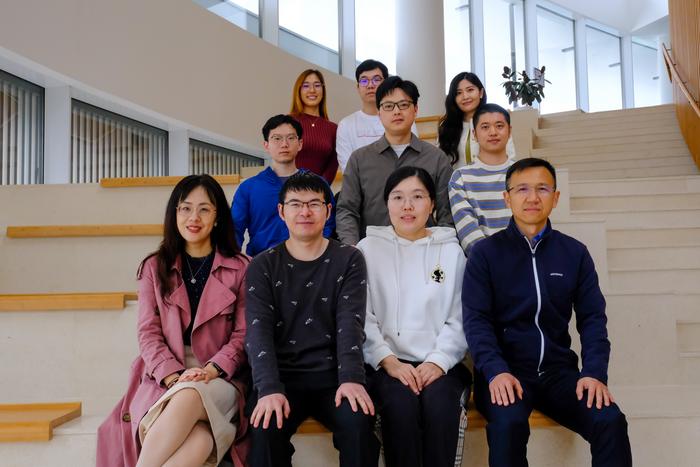A groundbreaking advance in neuroscience has been achieved by a research team from the Hong Kong University of Science and Technology (HKUST) led by Prof. Liu Kai. This innovative research focuses on a newly established intracranial pre-olivary pretectal nucleus (OPN) optic tract injury model, referred to as the pre-OPN optic tract injury (OTI) model. By developing this model, the team utilizes a sophisticated approach to delve into the intricate mechanisms underlying functional axonal rewiring after central nervous system (CNS) injuries. The significance of this work not only enhances our understanding of CNS injury recovery but may also pave the way for future therapeutic strategies addressing neural repair.
The intricacies of the pre-OPN OTI model are established through microsurgical intervention, wherein controlled mechanical pressure is applied between the lateral geniculate nucleus (LGN) and the OPN. This technique induces a targeted injury to the retinal ganglion cell (RGC) axons, aiming to recreate conditions reflective of genuine CNS damage while retaining the system’s operational characteristics. Compared to traditional injury models, the advantages of this methodology are manifold. Notably, it spares cortical tissue removal, thus enhancing surgical precision and complexity, allowing for close approximation to the target nucleus (OPN) which streamlines investigations into axonal regeneration.
One compelling aspect of the pre-OPN OTI model is its incorporation of the pupillary light reflex (PLR) as a quantitative metric for assessing functional recovery. This approach guarantees a comprehensive analysis of recovery over time, ensuring high survival rates of RGCs following injury which supports long-term observational studies. This model strategically captures the holistic recovery process, illustrating how all restored functions are derived from regenerated axons, an insight critical to mapping out the neurophysiological landscape post-injury.
In an impressive display of functional restoration, the research also found that knocking out the Pten/Socs3 genes in RGCs while simultaneously expressing the neurotrophic factor CNTF significantly boosts axonal regeneration towards the OPN. This pivotal finding was corroborated through extensive experimental validation, comprising super-resolution microscopy which confirmed the colocalization of presynaptic (Bassoon) and postsynaptic (Homer1) markers. Additionally, transmission electron microscopy was employed to visualize new synaptic structures formed between regenerated axons and OPN neurons.
The utilization of trans-synaptic viral tracing further buttressed the study’s findings, demonstrating restored synaptic transmission. Concurrently, electrophysiological recordings provided real-time confirmation of functional reconnection, culminating in evidence of partial recovery of PLR – thus affirming the restored functional connectivity. Notably, intrinsically photosensitive RGCs (ipRGCs) emerged as the essential neuronal subtype facilitating functional recovery, showcasing a remarkable ability to reconnect with their original targets through the regenerated axonal pathways.
To amplify regeneration efficiency and establish enduring functional recovery, the team devised a dual-intervention strategy combining axonal regeneration with synaptic enhancement. This innovative methodology included the knockdown of the lipid metabolism gene Lipin1, conducted in tandem with Pten/Socs3 knockout and CNTF expression. The outcome was significant, revealing an accelerated axonal regeneration and a remarkable reduction in PLR recovery time from six months to just three months. This advance underscores the model’s pragmatic implications for practical applications in clinical settings.
The enhancement of photosensitivity through the overexpression of melanopsin, coupled with the optimization of presynaptic voltage-gated calcium channel activity, served as an additional enhancement to synaptic signal transmission. The methods exhibited a substantial improvement in functional outcomes, offering a dual avenue for future research methodologies aimed at refining neuroregenerative therapies. Such insights, derived from thorough investigations, are essential for bridging the gap between laboratory findings and translational medicine.
In summary, the pre-OPN OTI model represents a critical advancement in the field of CNS repair research. By elucidating the pivotal roles of specific neuronal subtypes in the reconstruction of functional circuits, this groundbreaking work reveals the potential efficacy of dual-intervention strategies for enhancing neural repair following injuries. As the scientific community continues to grapple with complexities surrounding CNS regeneration mechanisms, Prof. Liu’s team’s findings contribute vital knowledge that could reshape therapeutic approaches aimed at combatting neural injuries and neurodegenerative disorders.
In conclusion, the introduction of the pre-OPN OTI model signifies a shift towards a deeper comprehension of CNS regenerative mechanisms, fostering the development of new precision therapies that target neural injuries while providing insights into the treatment of neurodegenerative paths.
Subject of Research: Central Nervous System Injury and Regeneration
Article Title: Functional optic tract rewiring via subtype- and target-specific axonal regeneration and presynaptic activity enhancement
News Publication Date: March 4, 2025
Web References: http://dx.doi.org/10.1038/s41467-025-57445-x
References: Not available
Image Credits: Credit: HKUST
Keywords
Axon regeneration, Neural modeling, Functional recovery, Optic tract injury, Retinal ganglion cells, Central nervous system, Neurodegenerative diseases
Tags: axon regeneration challengescentral nervous system injury recoveryfunctional axonal rewiring mechanismsHKUST neuroscience researchinnovative neuroscience modelsintracranial optic tract injury modelmammalian CNS self-repair limitationsneural circuit reconstructionpre-olivary pretectal nucleus researchProf. Liu Kaitherapeutic strategies for neural repair





